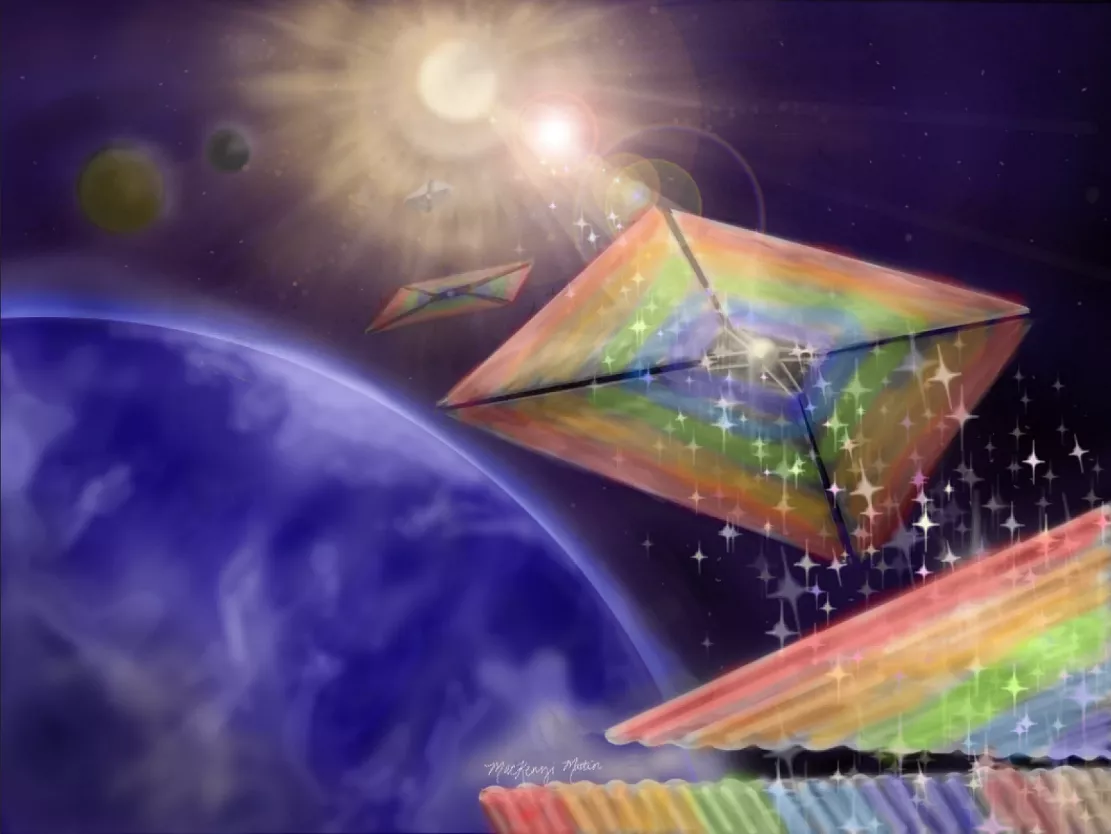NASA has chosen a fascinating new project for further development, which is called diffractive solar sail By bending the light before it hits the sail, the device can propel the spacecraft more effectively than traditional propulsion technology.

In the era of chemical rockets and ion thrusters, it seems rather old-fashioned to launch a huge sail and sail in the universe, but it may be a feasible method of propulsion. The solar sail pushes the spacecraft by using the pressure exerted by sunlight. Although this force is quite small, it can form a driving and guiding spacecraft if it has a large enough surface area, light enough material and patience.
The idea has actually been discussed for decades and even tested many times in space. Recently, lightsail 2 of the planetary society showed how to use sunlight to change the orbit of spacecraft.
However, there is still room for improvement in this technology - solar sails produce maximum thrust in direct sunlight, which limits the direction they can travel and their mobility. The new diffractive solar sail concept is to improve the efficiency of harvesting sunlight.
As the name suggests, this technology is based on diffraction phenomenon. Essentially, when light waves pass through a small gap, they begin to fan out on the other side of the barrier. To take advantage of this, diffractive solar sails will be made of small gratings embedded in a thin film, which will then disperse the sunlight falling on them. The final result is a more efficient and maneuverable spacecraft.
The project team said that this technology will enable spacecraft to reach places that other spacecraft cannot reach. As they suggested, the constellation composed of these spacecraft can be placed in the orbit of the sun's poles to improve the prediction of space weather.
The diffractive solar sail project has been selected as part of the third phase of NASA's innovative advanced concept (niac) program. The team will begin to optimize the sail material itself and conduct ground tests to prepare the design for future space missions.
NASA Director Bill Nelson said: "as we enter the universe farther than ever before, we will need innovative and cutting-edge technology to advance our mission. NASA's innovative advanced concept program helps release visionary ideas - such as novel solar sails - and bring them closer to reality."